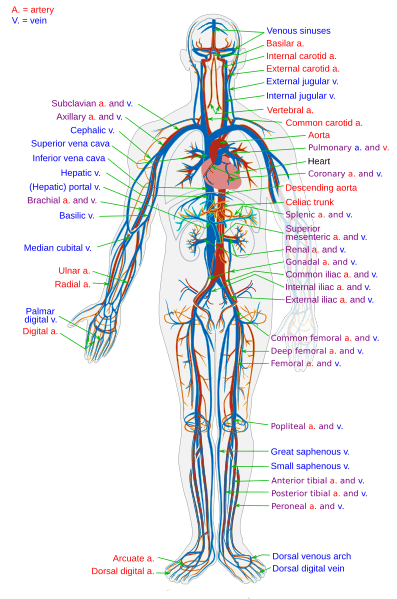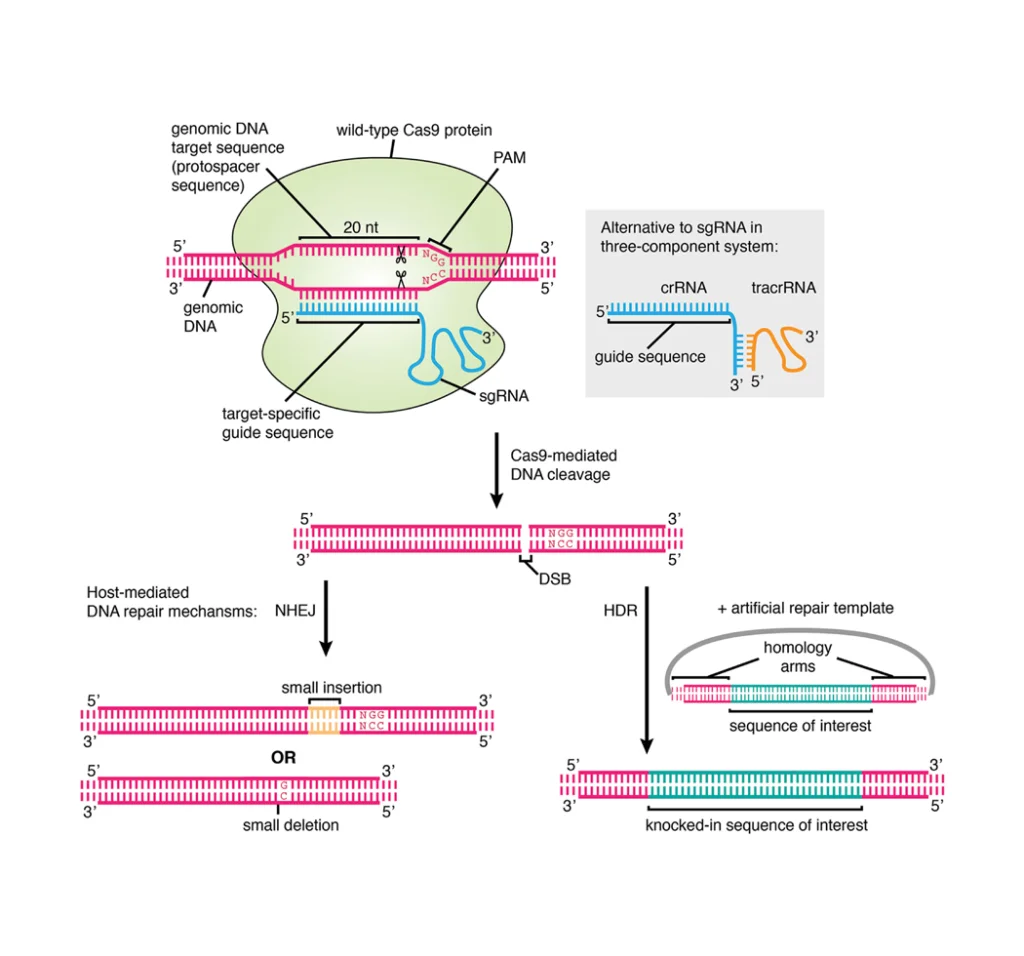- In-Stock Tumor Cell Lines
- Human Orbital Fibroblasts
- Human Microglia
- Human Pulmonary Alveolar Epithelial Cells
- Human Colonic Fibroblasts
- Human Type II Alveolar Epithelial Cells
- Human Valvular Interstitial Cells
- Human Thyroid Epithelial Cells
- C57BL/6 Mouse Dermal Fibroblasts
- Human Alveolar Macrophages
- Human Dermal Fibroblasts, Adult
- Human Lung Fibroblasts, Adult
- Human Retinal Muller Cells
- Human Articular Chondrocytes
- Human Retinal Pigment Epithelial Cells
- Human Pancreatic Islets of Langerhans Cells
- Human Kidney Podocyte Cells
- Human Renal Proximal Tubule Cells
The cardiovascular system is an indispensable complex network vital for life maintenance, comprising intricate cellular components operating in harmony to uphold bodily homeostasis and address physiological demands. This press offers a comprehensive overview of the components of cardiovascular system, the diversity of its major primary cells and their applications.
The Cardiovascular System
The cardiovascular system, also referred as the circulatory system, is an organ system that transports materials to and from all the cells of the body. The materials include oxygen from the lungs, nutrients from the digestive system, hormones from glands of the endocrine system, as well as waste materials from cells throughout the body. Comprising the heart and an intricate network of blood vessels, this system orchestrates the circulation of blood throughout the body. Arteries convey blood away from the heart, branching into larger vessels that progressively branch into smaller arteries and ultimately into the capillary network, akin to the branches of a tree stemming from its trunk, the aorta [1, 2].
The Heart
The heart, a muscular organ in the chest, mainly consists of cardiac muscle tissue and pumps blood through blood vessels by repeated and rhythmic contractions. Unlike skeletal muscle, cardiac muscle contracts routinely without any stimulation by the nervous system. Specialized cardiac muscle cells are the ones incharge of sending out electrical impulses to stimulate the contractions.
The Blood Vessels
The blood vessels of the cardiovascular system are interconnected and like a network of one-way roads that allow the transport of materials from one place to another. There are three major types of blood vessels including arteries, veins, and capillaries.
The blood vessels carrying blood away from the heart are called arteries. Their main function is to distribute oxygen to tissues throughout the body. The blood vessels carrying blood toward the heart are called veins. Veins carry deoxygenated blood in most cases. Figure 1 shows a labelled diagram of the major arteries and veins of the human body. Capillaries are the smallest blood vessels. They connect the smallest arteries and veins. As passing through the tissues, they exchange oxygen and other substances with cells.

Figure 1. A labelled diagram of the major arteries and veins of the human body (From Wikipedia).
Two Circulations
There are two interconnected circulations making up the human cardiovascular system, the systemic circulation and the pulmonary circulation. Cells throughout the body get oxygen from capillaries in the systemic circulation, and the pulmonary circulation is where the blood picks up oxygen [3]. Systemic circulation ensures that bodily structures receive essential resources for their function, while pulmonary circulation facilitates gas exchange between air and blood [4].
The circulatory process initiates between heartbeats, as blood transitions from the atria to the ventricles, the right ventricle of the heart pumps deoxygenated blood into the right and left pulmonary arteries. These arteries carry the blood to both lungs, respectively. In the lungs, the deoxygenated blood in the capillaries picks up oxygen and gives up carbon dioxide from and to the alveoli. The blood then returns to the heart again, becoming oxygenated in the process of the pulmonary circulation.
The systemic circulation consists of the heart and the blood vessels that supply the metabolic needs of all the cells in the body. The oxygenated blood that enters the left atrium of the heart in the pulmonary circulation then goes into the systemic circulation. This part of the cardiovascular system provides oxygen and nutrients and picks up wastes by transporting blood to and from all the tissues of the body [2, 5, 6].
The Blood
The blood is a fluid connective tissue circulating throughout the body in blood vessels relying on the pumping action of the heart. It carries oxygen and nutrients to all the cells in the body, and carries wastes like carbon dioxide away from them. The blood also has many other functions including transporting some other substances, protecting the body against infection and repairing body tissues. The fluid part of blood is yellowish, watery liquid called plasma. It contains blood cells and many dissolved substances. The blood cells in plasma include red blood cells, white blood cells, and platelets.
Primary Cells of the Cardiovascular System
1. Cardiac Fibroblasts: Cardiac fibroblasts are a major cell type present in the heart. Their primary function is to produce collagen and other connective tissue proteins, forming the connective tissue framework of the heart [7].
2. Cardiomyocytes: Cardiomyocytes are the cells that make up the heart muscle. They are responsible for contracting and pumping blood through the heart, delivering oxygen and nutrients to various parts of the body. Cardiomyocytes have the ability to autonomously contract and conduct electrical signals, enabling the heart to maintain a regular rhythm.
3. Vascular Smooth Muscle Cells: Vascular smooth muscle cells are responsible for mediating blood vessel diameter and maintaining vascular tone [8].
4. Endothelial Cells: Endothelial cells line the interior surface of blood vessels and play a crucial role in maintaining vascular function and health. They regulate vascular permeability, promote clot formation, and produce important signaling molecules. Additionally, they participate in regulating vascular tone and maintaining hemodynamic balance.
5. Red Blood Cells: Responsible for carrying oxygen to cells of the body and transporting carbon dioxide back to the lungs for elimination.
6. Leukocytes: Also known as White blood cells, are responsible for immune functions, including combating infections and clearing foreign substances. White blood cells are subdivided into several types, such as neutrophils, lymphocytes, and monocytes.
Besides the primary cells mentioned above, there is also a wide variety of blood products available on the market, including human whole blood, peripheral blood, plasma, serum, umbilical cord blood, and platelets.
Future Perspective
The primary cells in the cardiovascular system hold immense potential for future advancements in various fields. These cells can be utilized in regenerative medicine, personalized healthcare, drug development and screening, as well as biomedical research. With these cells, treatments tailored to specific diseases can be developed, and a deeper understanding of disease mechanisms can be achieved. Here are some potential future prospects:
Basic Research: The cardiovascular system provide a diverse range of both physiological and pathological cell products. The cell products donated by individuals with various diseases serve as valuable models for in vitro investments. The diseased cell models facilitate the study to unravel the pathogenic mechanisms and explore new methods for disease therapies.
Therapeutic Applications: Primary cardiovascular cells, such as stem cells derived from umbilical cord blood or bone marrow, hold immense potential for regenerative medicine [9]. These cells can be utilized in the treatment of various diseases, including blood disorders, immune deficiencies, and even neurological conditions.
Personalized Medicine: With advances in genetic and molecular profiling, primary cardiovascular cells can be utilized to develop personalized treatment strategies. By studying an individually specific cardiovascular cell characteristics, healthcare professionals can tailor therapies to target the underlying causes of diseases more effectively.
Cell-Based Therapies: The field of cell-based therapies, including chimeric antigen receptor (CAR) T-cell therapy, is rapidly evolving. Primary cardiovascular cells can be engineered ex vivo to enhance their therapeutic potential and targeted specifically on treating various cancers, autoimmune disorders, and infectious diseases [10, 11]. Continued research in this area holds promise for the development of more effective and precise treatment modalities.
Overall, primary cells in the cardiovascular system provide a rich resource for advancing healthcare and biomedical science. With ongoing research and technological innovations, their potential applications are very likely to be further expanded in the future.
References
[1] J.E. Hall, A.C. Guyton, Textbook of medical physiology, 12th ed., Saunders, Philadelphia, Pa. ; London, 2010.
[2] G.J. Tortora, B. Derrickson, Tortora’s principles of anatomy & physiology, Global ed., Wiley, Hoboken, NJ, 2017.
[3] E.N. Marieb, Essentials of human anatomy & physiology, Eleventh edition. ed., Pearson, Boston, 2015.
[4] M.R. Pinsky, Applied cardiovascular physiology, Springer, Berlin ; New York, 1997.
[5] E.P. Widmaier, A.J. Vander, Vander’s human physiology : the mechanisms of body function, Fifteenth edition / ed., McGraw-Hill Education, New York, NY, 2019.
[6] S.L. Thomas, J. Heaton, A.N. Makaryus, Physiology, Cardiovascular Murmurs, StatPearls, Treasure Island (FL), 2024.
[7] N.G. Frangogiannis, Fibroblasts, myofibroblasts and cardiac arrhythmias, J Cardiovasc Aging 3(4) (2023).
[8] Y. Dai, R. Xu, K. Yang, T. Jiang, Y. Wei, Y. Liu, W. Chen, Y. Fu, Y. Zhao, Effect of tissue factor pathway inhibitor on the pyroptosis of vascular smooth muscle cells induced by angiotensin II, Cardiovasc Diagn Ther 14(1) (2024) 72-83.
[9] I. Fares, J. Chagraoui, Y. Gareau, S. Gingras, R. Ruel, N. Mayotte, E. Csaszar, D.J. Knapp, P. Miller, M. Ngom, S. Imren, D.C. Roy, K.L. Watts, H.P. Kiem, R. Herrington, N.N. Iscove, R.K. Humphries, C.J. Eaves, S. Cohen, A. Marinier, P.W. Zandstra, G. Sauvageau, Cord blood expansion. Pyrimidoindole derivatives are agonists of human hematopoietic stem cell self-renewal, Science 345(6203) (2014) 1509-12.
[10] A. Trounson, C. McDonald, Stem Cell Therapies in Clinical Trials: Progress and Challenges, Cell Stem Cell 17(1) (2015) 11-22.
[11] R.A. Barker, M. Parmar, L. Studer, J. Takahashi, Human Trials of Stem Cell-Derived Dopamine Neurons for Parkinson’s Disease: Dawn of a New Era, Cell Stem Cell 21(5) (2017) 569-573.

Copyright - Unless otherwise stated all contents of this website are AcceGen™ All Rights Reserved – Full details of the use of materials on this site please refer to AcceGen Editorial Policy – Guest Posts are welcome, by submitting a guest post to AcceGen you are agree to the AcceGen Guest Post Agreement – Any concerns please contact marketing@accegen.com








